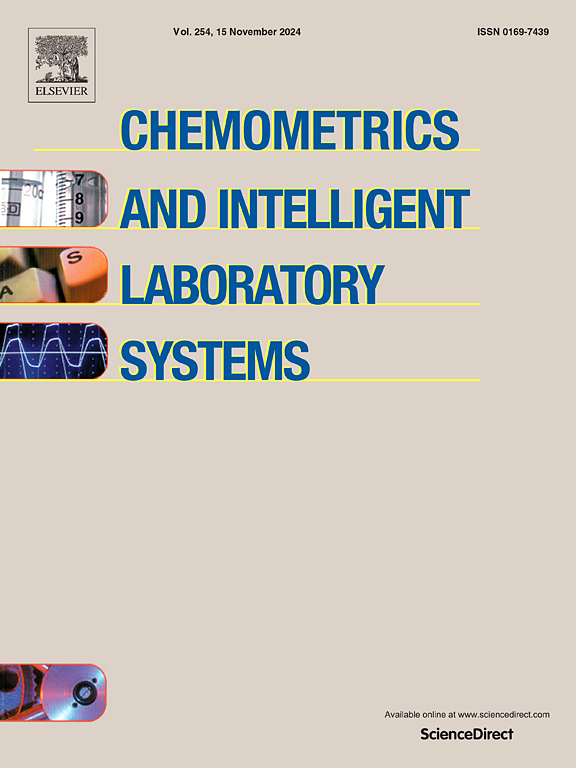用于MR脊柱图像分割的多初始关注网络
IF 3.8
2区 化学
Q2 AUTOMATION & CONTROL SYSTEMS
Chemometrics and Intelligent Laboratory Systems
Pub Date : 2025-05-08
DOI:10.1016/j.chemolab.2025.105425
引用次数: 0
摘要
脊柱MR图像的准确分割对于脊柱疾病的诊断具有重要意义。Unet自2015年提出以来,以其独特的编解码器对称架构和跳跃连接设计,成为医学图像分割的标杆模型。然而,传统Unet编解码器结构在深度特征提取时存在语义信息丢失的问题,且单跳连接方法难以有效融合多尺度特征,导致对复杂结构的分割精度有限。为了应对这些挑战,本研究提出了一种多启始关注Unet++ (miunet ++)模型。该模型采用不同的Inception模块代替Unet++的标准卷积层,通过扩展网络的宽度和深度,显著增强了多尺度特征提取能力。同时,引入多重注意机制,进一步增强网络对边界信息的敏感性,使模型能够更准确地捕捉到脊柱-软组织之间细微的解剖结构差异,从而提高网络的分割性能。实验结果表明,该模型在脊柱图像分割任务中表现良好,IoU、DSC、TPR和PPV分别达到0.8327、0.9041、0.9060和0.9068,各指标均优于基准方法。结果表明,该方法在MR脊柱图像分割中具有良好的性能。本文章由计算机程序翻译,如有差异,请以英文原文为准。
MIAUnet++: Multi-inception attention network for MR spine image segmentation
Accurate segmentation of MR spine images is of great important for the evaluation of spinal diseases. With its unique encoder-decoder symmetric architecture and jump connection design, Unet has become a benchmark model in medical image segmentation since its proposal in 2015. However, the traditional Unet encoder-decoder structure suffers from the problem of semantic information loss during deep feature extraction, and the single-hop connection method is difficult to effectively fuse multi-scale features, resulting in limited segmentation accuracy for complex structures. Responding to these challenges, this study proposes a multi-Inception attention Unet++ (MIAUnet++) model. The model uses different Inception modules to replace the standard convolutional layers of the Unet++, which significantly enhances the multi-scale feature extraction capability by extending the network width and depth. At the same time, multiple attention mechanisms are introduced to further enhance the sensitivity of the network to the boundary information, so that the model can more accurately capture the subtle anatomical structural differences between spine-soft tissues, thus improving the segmentation performance of the network. The experimental results show that the proposed model performs well in the spine image segmentation task with IoU, DSC, TPR and PPV reaching 0.8327, 0.9041, 0.9060 and 0.9068 respectively, outperforming the benchmark method in all metrics. It shows that the proposed method has good performance in MR Spine image segmentation.
求助全文
通过发布文献求助,成功后即可免费获取论文全文。
去求助
来源期刊
CiteScore
7.50
自引率
7.70%
发文量
169
审稿时长
3.4 months
期刊介绍:
Chemometrics and Intelligent Laboratory Systems publishes original research papers, short communications, reviews, tutorials and Original Software Publications reporting on development of novel statistical, mathematical, or computer techniques in Chemistry and related disciplines.
Chemometrics is the chemical discipline that uses mathematical and statistical methods to design or select optimal procedures and experiments, and to provide maximum chemical information by analysing chemical data.
The journal deals with the following topics:
1) Development of new statistical, mathematical and chemometrical methods for Chemistry and related fields (Environmental Chemistry, Biochemistry, Toxicology, System Biology, -Omics, etc.)
2) Novel applications of chemometrics to all branches of Chemistry and related fields (typical domains of interest are: process data analysis, experimental design, data mining, signal processing, supervised modelling, decision making, robust statistics, mixture analysis, multivariate calibration etc.) Routine applications of established chemometrical techniques will not be considered.
3) Development of new software that provides novel tools or truly advances the use of chemometrical methods.
4) Well characterized data sets to test performance for the new methods and software.
The journal complies with International Committee of Medical Journal Editors'' Uniform requirements for manuscripts.

 求助内容:
求助内容: 应助结果提醒方式:
应助结果提醒方式:


